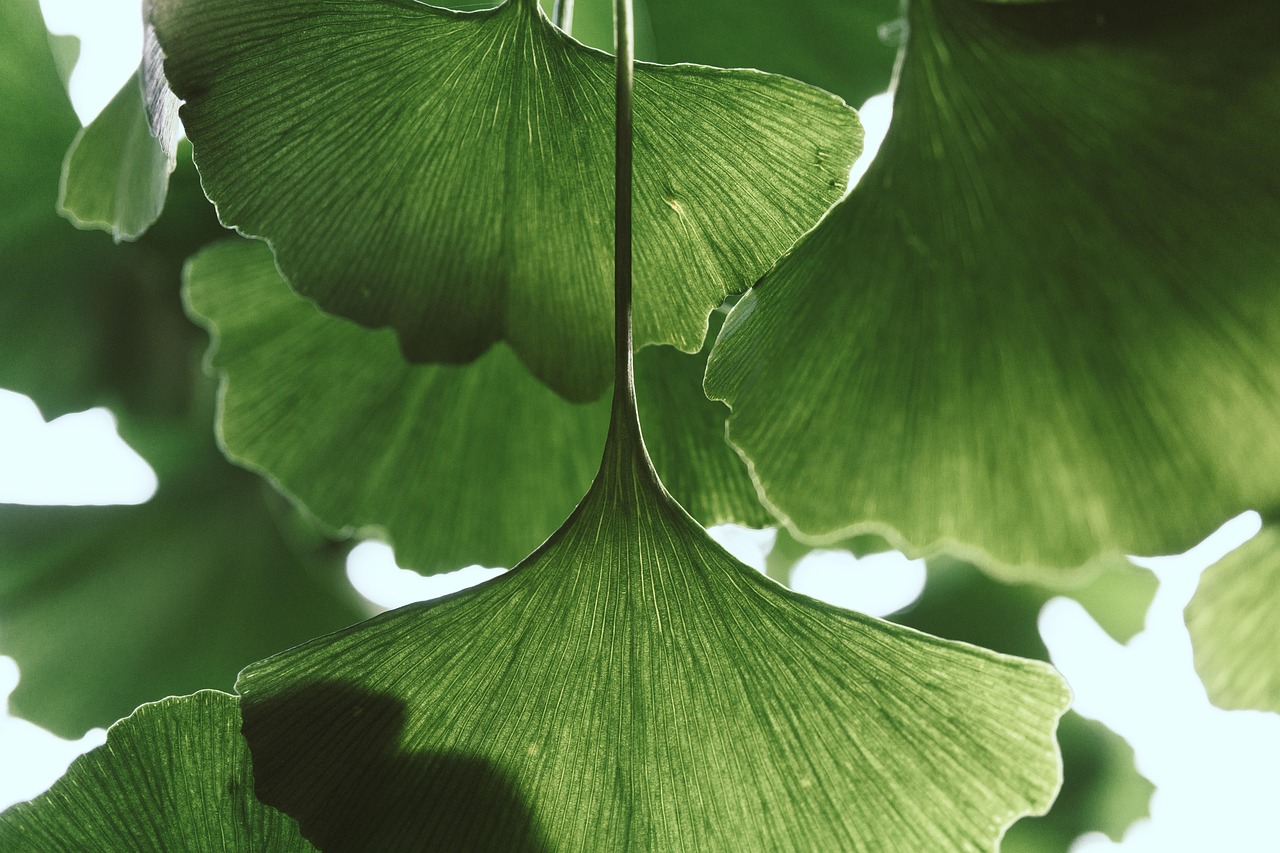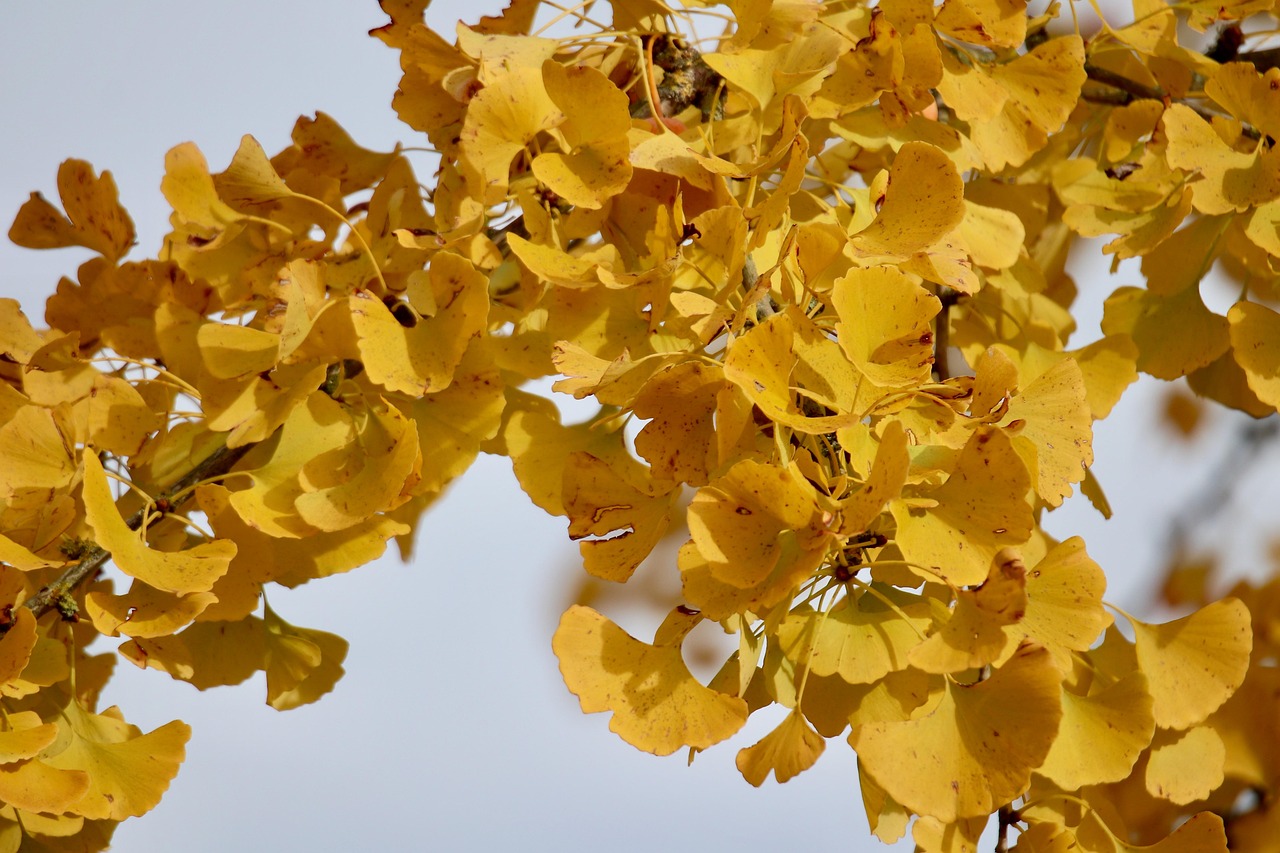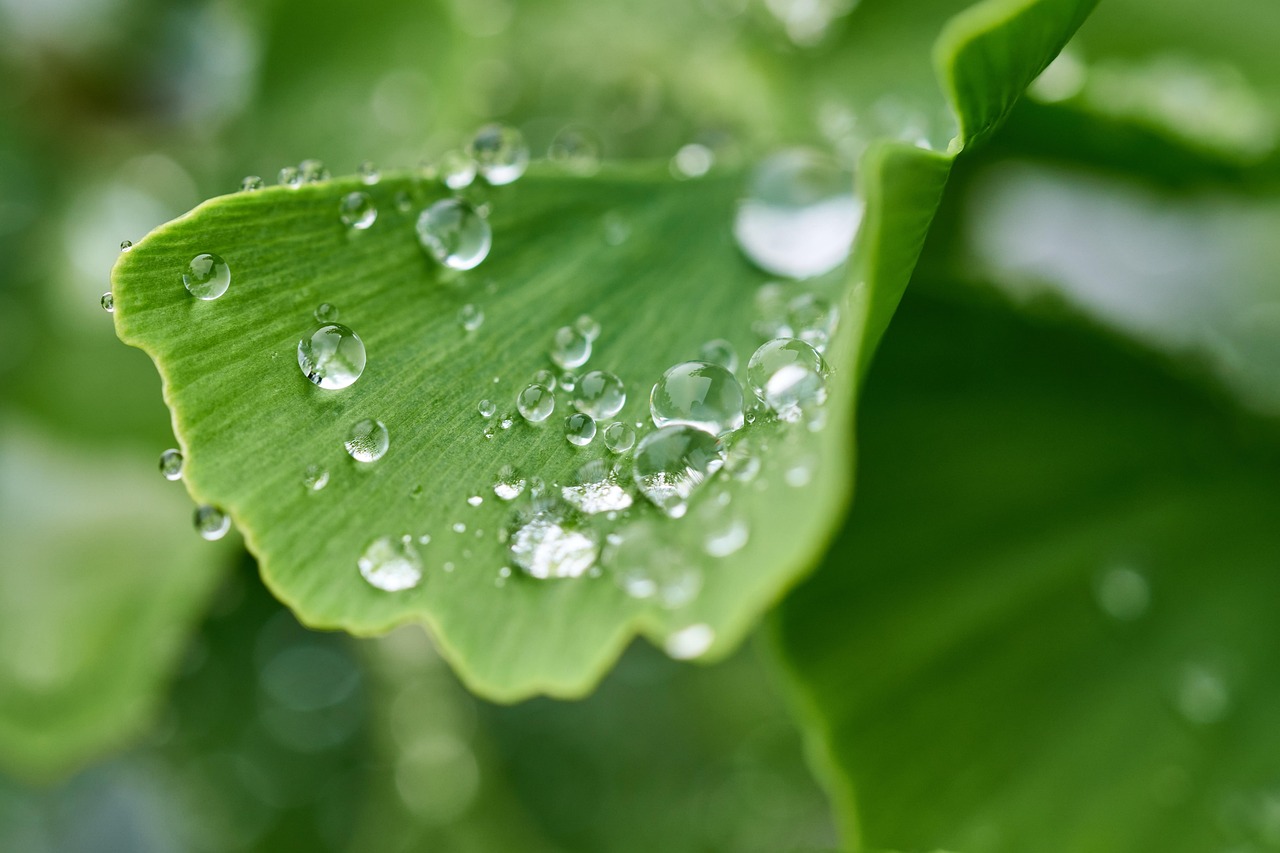To achieve ornamental growth in Ginkgo trees, prune during the dormant season. Focus on removing dead or crossing branches and maintaining a balanced shape. Regular pruning encourages healthy growth and enhances the tree’s unique visual appeal.
The Ginkgo tree, known for its distinctive fan-shaped leaves and stunning fall color, is a popular choice for ornamental landscaping. This ancient species, often referred to as a “living fossil,” can thrive in various environments and is known for its resilience. Proper pruning techniques can significantly enhance its beauty and health, ensuring that the tree remains a focal point in any garden. Understanding when and how to prune is crucial for maintaining the tree’s ornamental characteristics.

Pruning not only shapes the Ginkgo tree but also promotes better air circulation and sunlight penetration throughout the canopy. It helps to minimize disease and pest problems, contributing to the overall vitality of the tree. The best time to prune Ginkgo trees is during the late winter or early spring when the tree is still dormant. This timing reduces stress on the plant and allows for optimal healing after cuts.
Understanding Ginkgo Trees
Ginkgo biloba, the scientific name for the Ginkgo tree, is one of the oldest living tree species. Here are some key features that make it unique:
- Longevity: Ginkgo trees can live for over a thousand years.
- Resilience: They are highly resistant to diseases and pests.
- Adaptability: Ginkgos can thrive in a variety of soil types and urban conditions.
- Aesthetic Appeal: Their striking yellow foliage in the autumn adds beauty to landscapes.
When caring for a Ginkgo tree, proper pruning is essential to maintain its health and appearance. The following tips outline effective pruning techniques specific to this species.

Pruning Techniques for Ginkgo Trees
Pruning Ginkgo trees requires a careful approach to ensure that the tree remains healthy and visually appealing. Here are some essential techniques:
- Start with Clean Tools: Use sharp, clean pruning shears or saws to make precise cuts. This prevents injury to the tree and reduces the risk of disease.
- Remove Dead or Diseased Wood: Identify branches that are dead, damaged, or showing signs of disease. Cut these branches back to healthy tissue or remove them entirely.
- Thin Out Crowded Areas: If branches are growing too close together, thin them out to improve air circulation. This will help reduce the likelihood of fungal infections.
- Maintain Shape: Aim for a balanced shape by selectively cutting back on longer branches. This creates a more uniform appearance while allowing light to penetrate the canopy.
- Avoid Topping: Do not top Ginkgo trees, as this can lead to weak growth and increased susceptibility to pests and diseases.
The importance of pruning at the right time cannot be overstated. Timing affects how well the tree recovers from pruning and its overall growth in the following seasons. Below is a table highlighting the best times for pruning based on specific growth stages:
| Time of Year | Reason for Pruning |
|---|---|
| Late Winter | Tree is dormant; minimal stress during pruning. |
| Early Spring | Before new growth begins; allows for shaping before leaf emergence. |
| After Leaf Drop | Assess branch structure and remove any dead or problematic growth. |
An additional aspect to consider is the natural growth habit of Ginkgo trees. These trees typically develop a strong central leader with horizontal branching, creating an attractive silhouette. When pruning, aim to enhance this natural form rather than forcing an unnatural shape.

Monitoring the health of your Ginkgo tree post-pruning is equally important. Watch for signs of stress or disease, such as wilting leaves or discoloration. Providing adequate water and nutrients will help the tree recover and thrive after pruning sessions.
In summary, proper pruning of Ginkgo trees is vital for maintaining their beauty and health. By implementing these techniques and considering the ideal timing, gardeners can ensure their Ginkgo trees remain stunning focal points in their landscapes.
Common Pruning Mistakes to Avoid
While pruning is essential for the health and aesthetics of Ginkgo trees, there are common mistakes that can lead to undesirable outcomes. Avoiding these pitfalls will help ensure that your tree remains vigorous and attractive.

- Pruning at the Wrong Time: Pruning during the active growth season can stress the tree. Stick to late winter or early spring.
- Over-Pruning: Removing too much foliage can weaken the tree. Only prune what is necessary to maintain health and shape.
- Ignoring the Natural Shape: Forcing a Ginkgo into an unnatural shape can lead to weak growth. Respect its natural form when pruning.
- Using Dull Tools: Dull tools can crush branches rather than making clean cuts, increasing the risk of disease.
- Neglecting Cleanup: Failing to remove pruned branches can harbor pests and diseases. Always clean up after pruning.
Tools for Pruning Ginkgo Trees
Having the right tools is crucial for effective pruning. The following tools are recommended for Ginkgo tree maintenance:
- Hand Pruners: Ideal for small branches up to ¾ inch in diameter. They provide precision and ease of use.
- Loppers: Best for branches between ¾ inch and 2 inches thick. They offer greater leverage and reach.
- Pruning Saw: Necessary for larger branches over 2 inches in diameter. A sharp saw ensures clean cuts.
- Hedge Shears: Useful for trimming smaller, dense areas if needed, though they should be used sparingly on Ginkgos.
- Tree Climbing Gear: For large trees, consider safety harnesses and ropes if pruning higher branches is necessary.
Maintaining these tools by sharpening blades and cleaning them after use will ensure they remain effective for future pruning sessions.
Understanding Ginkgo Tree Growth Patterns
To prune effectively, it is essential to understand how Ginkgo trees grow. Their growth patterns influence when and how you should prune them.
- Growth Rate: Ginkgo trees are moderate growers, typically reaching heights of 50 to 80 feet. Their growth is more rapid in youth and slows as they mature.
- Branching Habit: These trees tend to develop strong lateral branches, which can create a broad canopy. This characteristic should guide your pruning strategy.
- Leaf Development: The fan-shaped leaves emerge in spring and turn brilliant yellow in fall, making seasonal timing critical for aesthetic pruning.
Understanding these growth patterns helps in planning your pruning approach. By aligning your techniques with the tree’s natural tendencies, you can maintain its health and appearance more effectively.
Pest and Disease Management
Pruning is not just about shaping the tree; it also plays a significant role in pest and disease management. By keeping your Ginkgo tree healthy, you can minimize potential infestations and infections.
- Regular Inspections: Frequently check your tree for signs of pests such as aphids or scale insects. Early detection is key to management.
- Promote Air Circulation: Effective pruning allows air to flow freely through the canopy, reducing humidity that can lead to fungal diseases.
- Fungicide Treatments: If you notice signs of disease like leaf spots or blight, consider applying a fungicide as a preventive measure.
- Sanitation Practices: Clean up fallen leaves and debris under the tree to prevent the spread of pathogens.
By integrating pest and disease management into your pruning routine, you can enhance the overall health of your Ginkgo trees.
The Role of Fertilization After Pruning
After pruning, providing proper nutrition to your Ginkgo tree is essential for recovery and growth. Fertilization can aid in promoting new growth and enhancing overall vigor.
- Nitrogen-Rich Fertilizers: Applying a balanced fertilizer with adequate nitrogen content will support healthy leaf development.
- Organic Options: Consider using compost or well-rotted manure as a natural fertilizer option, which also improves soil structure.
- Timing: Fertilize in early spring just as new growth begins. Avoid fertilizing in late summer or fall to prevent new growth that may be damaged by winter cold.
By following these fertilization tips, you will support your Ginkgo tree’s recovery from pruning and enhance its ornamental qualities for years to come.
Seasonal Care After Pruning
The care provided to a Ginkgo tree after pruning is crucial for its ongoing health. Seasonal attention will help ensure that it thrives throughout the year.
- Watering Needs: Ensure the tree receives adequate water, especially during dry periods. Young trees may require more frequent watering compared to established ones.
- Mulching: Apply a layer of organic mulch around the base of the tree to retain moisture and suppress weeds, while also enriching the soil as it decomposes.
- Monitoring Growth: Keep an eye on how the tree responds after pruning. Look for healthy new growth and adjust care practices accordingly.
Caring for your Ginkgo tree through each season will maximize its ornamental potential and ensure it remains a beautiful addition to your landscape.
Enhancing Ginkgo Tree Aesthetics Through Pruning
Pruning is not solely about maintaining the health of a Ginkgo tree; it also plays a vital role in enhancing its aesthetic appeal. By understanding how to shape the tree effectively, you can create a striking focal point in your landscape.
Shaping Techniques for Ornamental Growth
Utilizing specific shaping techniques can help you achieve a more visually pleasing Ginkgo tree. Here are some effective methods:
- Center Leader Pruning: Allowing a central leader to dominate encourages upward growth. This technique enhances the tree’s vertical structure.
- Horizontal Branching: Encourage lateral growth by selectively pruning branches at various heights. This creates a fuller canopy and enhances the tree’s overall silhouette.
- Layering: This involves creating a tiered effect by pruning lower branches more aggressively than upper ones. It adds depth and dimension to the tree.
- Selective Thinning: Remove select branches to allow light to filter through the canopy. This not only beautifies the tree but also promotes healthier growth.
These shaping techniques, when applied judiciously, will enhance the ornamental qualities of your Ginkgo tree, making it a standout feature in your garden.
Seasonal Aesthetic Enhancements
Different seasons bring unique opportunities to enhance the aesthetics of your Ginkgo tree. Each phase of its growth can be complemented by specific pruning and care strategies.
| Season | Aesthetic Focus | Pruning Tips |
|---|---|---|
| Spring | New Growth | Lightly prune to shape as new leaves emerge. |
| Summer | Full Foliage | Thin out crowded areas to maintain air circulation. |
| Fall | Color Change | Prune after leaf drop to assess structure and remove dead branches. |
| Winter | Structure Visibility | Focus on thinning and shaping before new growth begins. |
This seasonal approach allows for ongoing enhancement of your Ginkgo tree’s appearance, ensuring that it remains attractive throughout the year.
Common Ginkgo Tree Varieties and Their Pruning Needs
Different Ginkgo varieties may have unique characteristics that influence their pruning requirements. Understanding these differences can help ensure effective care.
- Ginkgo biloba ‘Autumn Gold’: Known for its vibrant yellow leaves in fall, this variety benefits from regular thinning to maintain its shape and encourage airflow.
- Ginkgo biloba ‘Fastigiata’: The columnar growth habit of this variety makes it ideal for narrow spaces. Prune to keep a clean, upright form without excessive lateral branching.
- Ginkgo biloba ‘Saratoga’: This variety has a broad canopy and requires selective pruning to maintain balance and prevent overcrowding of branches.
By tailoring your pruning techniques to the specific needs of each Ginkgo variety, you can enhance their unique characteristics while promoting health and beauty.
Caring for Young vs. Mature Ginkgo Trees
The care approach for young Ginkgo trees differs significantly from that for mature specimens. Understanding these differences is crucial for effective management.
Younger Trees
Younger Ginkgo trees are still establishing their structure. Focus on:
- Establishing Form: Encourage a strong central leader and balanced branching to create a sturdy structure.
- Avoiding Heavy Pruning: Limit pruning to minor adjustments. Allow the tree to develop naturally during its formative years.
- Regular Monitoring: Keep an eye on growth patterns and make adjustments as needed to prevent disease or structural issues.
Mature Trees
Mature Ginkgo trees require different approaches as they are more established. Focus on:
- Maintaining Shape: Regularly prune to maintain an attractive silhouette, removing any dead or diseased branches.
- Thinning Canopy: Ensure adequate light penetration by thinning out crowded branches, promoting healthier foliage.
- Pest Management: Monitor for pests and diseases regularly, as older trees may be more susceptible due to their size and structure.
This differentiated approach ensures that both young and mature Ginkgo trees receive the appropriate care for optimal growth and health.
The Environmental Impact of Pruning Practices
The ways in which we prune our Ginkgo trees can have broader implications for the environment. Sustainable pruning practices contribute positively to the ecosystem.
- Biodiversity Support: Healthy trees support local wildlife by providing habitat and food sources. Proper pruning can enhance overall tree health and longevity.
- Erosion Control: Well-maintained trees help prevent soil erosion. Pruning strengthens their structural integrity, allowing them to withstand harsh weather conditions.
- Carbon Sequestration: Trees play a critical role in capturing atmospheric carbon. Maintaining healthy trees through proper pruning maximizes their carbon storage capacity.
By adopting environmentally friendly pruning practices, you contribute to a healthier ecosystem while caring for your Ginkgo trees.
Cultivating Community Awareness of Ginkgo Tree Care
Educating others about proper Ginkgo tree care can foster community engagement and appreciation for these magnificent trees. Consider these strategies to raise awareness:
- Workshops: Host workshops on tree care and pruning techniques in local parks or community centers.
- Community Clean-Up Days: Organize events focused on maintaining local green spaces, including pruning and caring for Ginkgo trees.
- Online Resources: Create informative content or share articles on social media platforms about Ginkgo tree care practices.
By actively engaging your community in the care of Ginkgo trees, you promote environmental stewardship and enhance the beauty of shared spaces.
Additional Resources for Ginkgo Tree Care
To further enhance your knowledge and skills in pruning and caring for Ginkgo trees, consider exploring the following resources:
- Books: Look for books dedicated to tree care and horticulture. Titles focusing on deciduous trees often include sections on Ginkgo trees.
- Online Courses: Many universities and gardening organizations offer online courses on tree care and maintenance, which may cover Ginkgo trees specifically.
- Local Arborists: Consulting a certified arborist can provide personalized advice tailored to your specific trees and local conditions.
- Gardening Clubs: Joining a local gardening club can connect you with experienced gardeners who share tips and best practices related to tree care.
Utilizing these resources can deepen your understanding of Ginkgo tree care, enabling you to maintain your trees more effectively and sustainably.
Understanding Ginkgo Tree Benefits Beyond Aesthetics
While the ornamental beauty of Ginkgo trees is widely recognized, they also offer numerous additional benefits that contribute to their desirability in landscapes.
- Air Quality Improvement: Ginkgo trees absorb pollutants and release oxygen, improving air quality in urban environments.
- Urban Heat Reduction: The shade provided by mature Ginkgo trees helps lower temperatures in urban areas, creating a cooler microclimate.
- Wildlife Habitat: These trees attract various pollinators and birds, contributing to local biodiversity.
- Cultural Significance: Ginkgo trees have historical and cultural significance in many societies, symbolizing resilience and longevity.
By recognizing these benefits, you can better appreciate the value of Ginkgo trees in your landscape and community.
Addressing Common Concerns About Ginkgo Trees
Despite their many advantages, some concerns about Ginkgo trees may arise, particularly regarding their fruit and maintenance. Here are some common issues and how to address them:
- Fruit Mess: Female Ginkgo trees produce fruit that can be smelly and messy. Consider planting male cultivars, which do not produce fruit, for a cleaner option.
- Pest Concerns: While generally pest-resistant, occasional infestations can occur. Regular monitoring and pruning can help manage these issues effectively.
- Slow Growth: Ginkgo trees may take time to establish. Patience is essential when nurturing young trees; proper care will reward you with long-term growth.
Understanding these concerns allows you to make informed decisions when selecting and caring for your Ginkgo trees.
Final Thoughts
Ginkgo trees are remarkable additions to any landscape, combining beauty, resilience, and ecological benefits. Through proper pruning techniques, seasonal care, and community involvement, you can ensure these magnificent trees thrive for generations. Emphasizing the importance of sustainable practices not only enhances the health of individual trees but also contributes positively to the environment as a whole. By sharing knowledge with others and fostering a community of tree care enthusiasts, you can create a lasting legacy that celebrates the unique qualities of Ginkgo trees.
As you embark on your journey of caring for Ginkgo trees, remember that each tree presents an opportunity to learn and grow. Whether you are a seasoned gardener or just starting, embracing the art of pruning and caring for these ancient trees will enrich your gardening experience and enhance the beauty of your surroundings.
